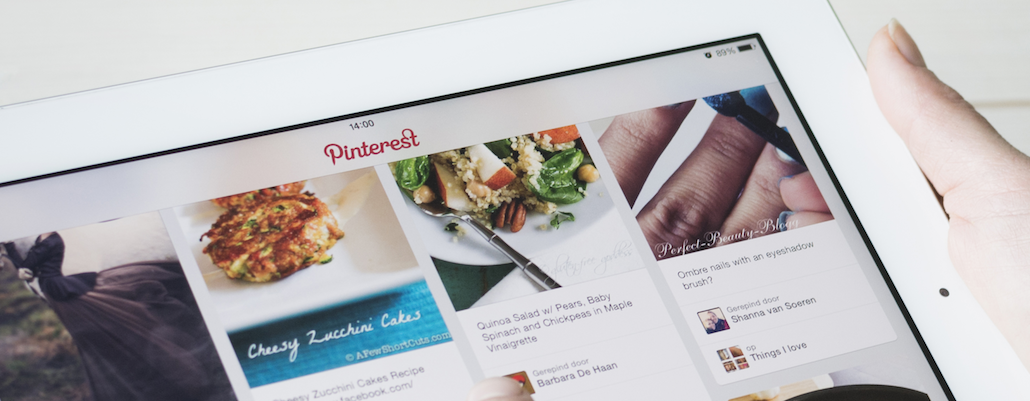Save 50% on a 3-month Digiday+ membership. Ends Dec 5.

Pinterest’s pitch to brands is getting more sophisticated, with targeting tools, fancier ads, and more robust e-commerce tie-ins. A pitch deck obtained by Digiday shows that the social media site, where people digitally scrapbook their IRL aspirations, is going after big-money brands with a full suite of ad offerings.
The pitch shows that Pinterest is offering some exclusive services to top advertisers, including digital couponing, which it said it hadn’t done before. It also lays out its new targeting tactics and ability to measure the impact of ads on sales through partnerships with companies like Datalogix. “You have to spend a lot of money to get that level of dedication, to get the attention of these platforms,” said Chris Tuff, director of business development and partnerships at 22squared.
The pitch, for a pet-food brand, offers almost everything Pinterest has been working toward the past year (some say too slowly.) Here’s a look at the key slides:
It’s pinning cats and dogs
Pinterest has more than 100 million users, this slide shows that many of them, 21.8 million pinners, are talking about pets. Women over 35 with household incomes above $100,000, are 36 percent more likely to be on the platform than other social channels. And dogs are more popular than cats it seems, with 359 million dog-related pins versus 320 million cat pins.

Social? No, thanks
In this slide, Pinterest shows how it sits somewhere between social media and search, with a little dig at social, where it claims Facebook users are not on the social network to shop. On Pinterest, they’re “open to new ideas.” This has become a familiar theme from Pinterest as it tries to show the value of the platform, where people “pin” digital items they come across online. The popular themes on Pinterest include fashion, home design, fitness, travel and other topics. Most of the content that is posted to Pinterest, 75 percent, features a brand mention.

Cinematic couponing
This is a new offering, according to the pitch. Pinterest can incorporate a link to digital coupons, if the brand has a third-party couponing service like Ibotta. The coupon promotion could be served in one of Pinterest’s newest ad formats, Cinematic Pins, which are GIF-like pins that move as the user scrolls up and down, but stop when the user stops. “Drive trial and purchase by using these innovative units as a way to reveal coupons,” Pinterest says.
“I love it. This is an attempt to really drive people to retail. Most marketers know that’s where a lot of the real dollars are,” Tuff said. “And on the back end, you can see how many retail sales coupons are driving, which proves the value of Pinterest.”

Targeting behavior
Pinterest has gotten better at understanding its audience — it can tell their interests based on pinning activity. Advertisers are able to target based on behavior or the context of the pages people visit, as well as more general attributes like gender. Behavioral targeting is the most specific for the individual user, as specific as “parents to be” and “brides and grooms to be.” It also has categories of behaviors from artsy to outdoorsy to travel pinners.

It pays to pay
This Pinterest chart shows the benefits of putting paid media behind a marketing campaign on the site. In fact, it shows that simply posting freely with an organic marketing strategy won’t get you too far. The organic pin strategy in the chart shows that over the course of a year, with 2,800 posts, the marketer reached 1.2 million people. With promoted pins, the marketer posted 80 of them and reached 10 million people. That’s 10 times the reach at 1/15 the content creation effort.
“Brands who create a robust organic presence for themselves across their official Pin Board become ‘discoverable’ and offer a variety of content which can be ‘re-pinned’ by followers, driving significant earned media,” said Sean O’Neal, president of Adaptly, a marketing technology platform that works with Pinterest. “But the most effective way to extend the reach of those pins is to boost them with paid media.”

More in Media

AI-powered professional learning and the battle vs. ‘workslop’: Inside Deloitte’s Scout
Deloitte last month launched Scout as part of its Project 120, the company’s $1.4 billion investment in professional development.

‘The Big Bang has happened’: Reach gets proactive on AI-era referrals, starting with subscriptions
This week, the publisher of national U.K. titles Daily Mirror, Daily Express and Daily Star, is rolling out its first paid digital subscriptions – a big departure from the free, ad-funded model it’s had throughout its 120-year history.

Arena Group, BuzzFeed, USA Today Co, Vox Media join RSL’s AI content licensing efforts
Arena Group, BuzzFeed, USA Today Co and Vox Media are participating in the RSL Collective’s efforts to license content to AI companies.





